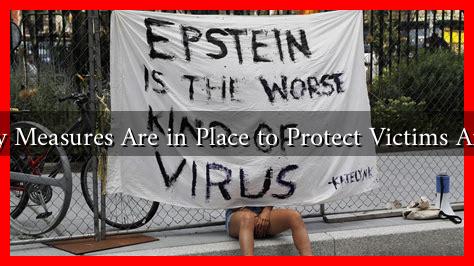-
Table of Contents
What Safety Measures Are in Place to Protect Victims After Epstein
The case of Jeffrey Epstein, a financier and convicted sex offender, has brought to light the vulnerabilities faced by victims of sexual abuse and trafficking. Following Epstein’s arrest and subsequent death in 2019, there has been a heightened focus on the safety and protection of victims. This article explores the various safety measures that have been implemented to support and protect victims in the aftermath of the Epstein case.
Legal Protections for Victims
One of the primary safety measures in place for victims of sexual abuse is the legal framework designed to protect their rights and ensure their safety. Several laws and initiatives have been enacted to provide victims with the necessary support:
- Victim Protection Laws: Many states have enacted laws that provide specific protections for victims of sexual violence, including restraining orders and confidentiality provisions.
- Victim Advocacy Programs: Organizations such as the National Center for Victims of Crime offer resources and support for victims navigating the legal system.
- Federal Legislation: The Violence Against Women Act (VAWA) provides funding for victim services and emphasizes the importance of victim safety in legal proceedings.
Support Services and Resources
In addition to legal protections, various support services have been established to assist victims in their recovery and ensure their safety:
- Crisis Hotlines: Organizations like the National Sexual Assault Hotline (1-800-656-HOPE) provide immediate support and resources for victims in crisis.
- Counseling Services: Many communities offer counseling and therapy services specifically tailored for survivors of sexual abuse, helping them process their trauma.
- Safe Housing Initiatives: Programs that provide safe housing for victims are crucial, especially for those who may be at risk of further victimization.
Community Awareness and Education
Raising awareness about the issues surrounding sexual abuse and trafficking is essential for creating a safer environment for victims. Educational initiatives aim to inform the public and empower victims:
- Public Awareness Campaigns: Campaigns like #MeToo have played a significant role in bringing attention to sexual violence and encouraging victims to come forward.
- Workshops and Training: Many organizations conduct workshops to educate community members about recognizing signs of abuse and how to support victims effectively.
- School Programs: Educational institutions are increasingly incorporating programs that teach students about consent, healthy relationships, and the importance of reporting abuse.
Case Studies: Successful Implementation of Safety Measures
Several case studies illustrate the effectiveness of safety measures in protecting victims:
- The Rape Crisis Center in San Diego: This center provides comprehensive services, including legal advocacy, counseling, and a 24-hour hotline, significantly improving victim support in the region.
- The New York City Anti-Trafficking Network: This coalition of organizations works to provide resources and support for trafficking victims, ensuring their safety and access to services.
Challenges and Areas for Improvement
Despite the progress made, challenges remain in ensuring the safety of victims:
- Underreporting: Many victims still do not report their experiences due to fear of retaliation or lack of trust in the legal system.
- Resource Limitations: Many support services are underfunded, limiting their ability to reach and assist all victims effectively.
- Stigma and Shame: Societal stigma surrounding sexual abuse can deter victims from seeking help and support.
Conclusion
The safety measures implemented in the wake of the Epstein case reflect a growing recognition of the need to protect and support victims of sexual abuse and trafficking.
. Legal protections, support services, community awareness, and successful case studies highlight the progress made, while also underscoring the challenges that remain. Continued efforts to improve resources, raise awareness, and foster a supportive environment are essential for ensuring that victims feel safe and empowered to seek help. As society moves forward, it is crucial to maintain a focus on victim safety and support, ensuring that no one has to suffer in silence.
For more information on resources available for victims, visit the RAINN website.





